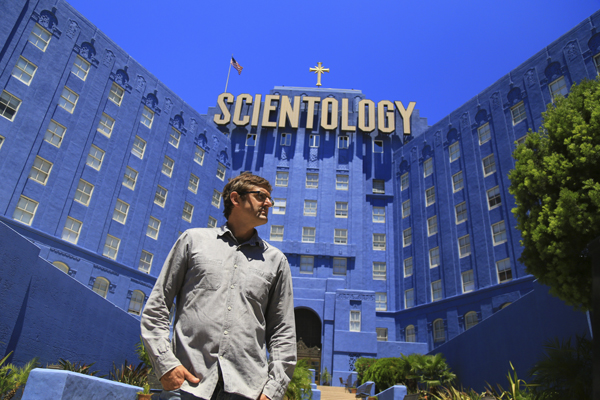For decades now, the Church of Scientology has been a mysterious religious organization, best known for its connection to celebrities such as movie star Tom Cruise. Documentarian Louis Theroux had been hoping to be the first journalist to explore its more positive side. However, after the church refuses to participate, he takes a more unorthodox tact and starts talking to disgruntled ex-members, most notably a former zealot who had been a right-hand man for its current leader.
If that sounds like the makings of something far more sensationalistic, and potentially critical, than what Theroux originally set out to do, you’d be right. He and director John Dower reenact events described by former church members, and many of them support the widespread perception of the Church of Scientology as a cult. The ex-zealot, Mark Rathbun, brings a meticulous, downright obsessive hand to the scenes depicting processes comparable to brainwashing, and the team hires actors to participate.
Along with re-creating “auditing sessions,” in which participants are hooked up to lie detectors while being asked increasingly personal questions (a version of this appears in Paul Thomas Anderson’s 2012 film The Master, itself partly based on Scientology founder L. Ron Hubbard), the film explores “bullbaiting.” This involves subjects being repeatedly abused verbally until they are “flattened,” or rendered emotionally numb, making them more susceptible to the church’s suggestions. There is also a re-creation of David Miscavige, the organization’s leader since 1986, smashing objects and manhandling a subordinate based on an ex-follower’s interview.
Theroux admits that not everything in his film is the hard-and-fast truth and some scenes are amalgamations based on several anecdotes. At the same time, it becomes increasingly difficult to discount anything about the church as too extreme, especially since its members attempt to intimidate Theroux and his collaborators from early on. It starts out with a mysterious white car with dark-tinted windows that seems to be following Theroux and his crew around. Then the filmmakers receive cryptic letters from the church’s legal representatives, and a two-person film crew starts showing up at their shoots, filming them without stating why.
These events are all accompanied by eerie music that creates a mood of uncertainty and suspense. Unfortunately, any sense of drama is often undercut by how the supposed antagonists do nothing more than stand at a distance and try to look menacing. When Theroux confronts them, they tend to get uncomfortable and slink away, or at their most assertive, they will take on an affectation explained as “Tone 40” by Rathbun, in which they bark the same order over and over again. While there is something conceptually disturbing about the single-minded attack mode these otherwise average-looking people take on, they tend to look childish when using it on Theroux, who is often facing them with a friendly disposition.
Obviously, My Scientology Movie isn’t going to find much of an audience with Scientologists, but for the rest of us, it offers lessons on how to passively resist intimidation by individuals who try to use volume and aggression to silence others. During scenes of confrontation, Theroux seems to keep in mind that he is acting within his legal rights and that ultimately America is a nation of laws. Let’s hope it stays that way for the foreseeable future.

















Leave A Comment